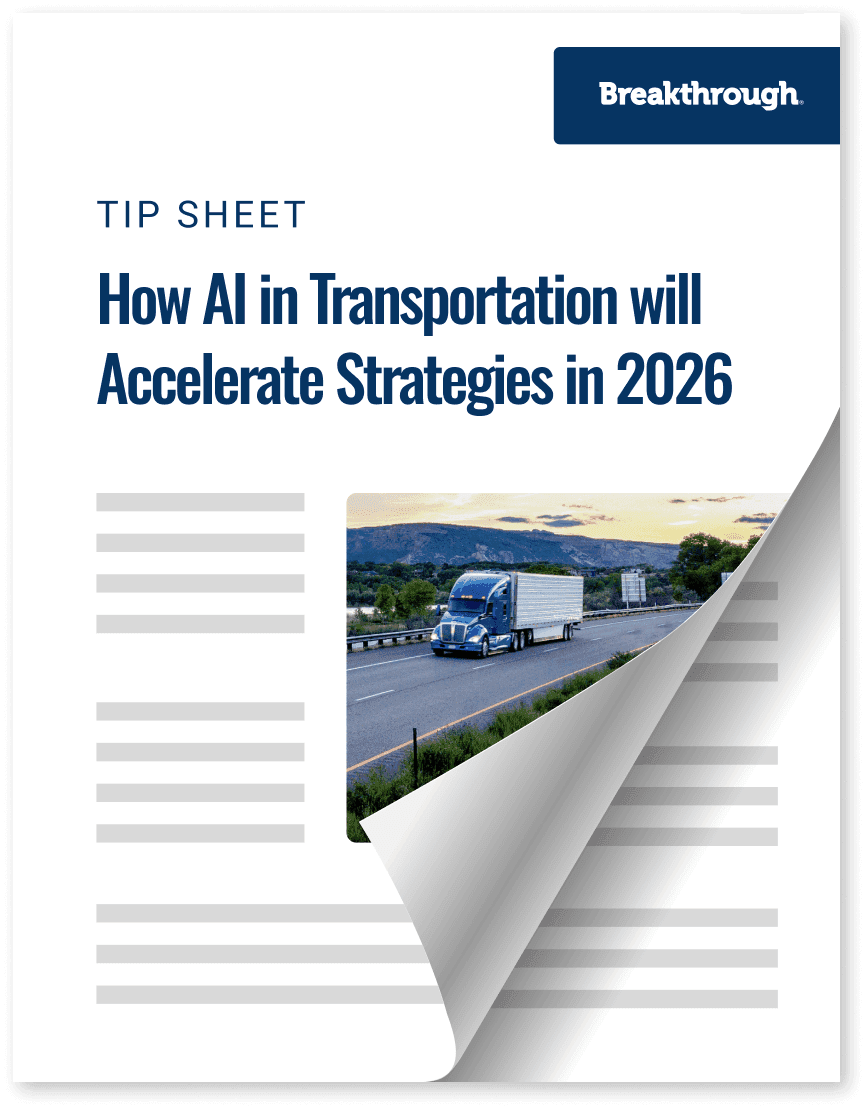How AI in Transportation will Accelerate Strategies in 2026

Trending
Top Posts
Fuel
Why Do Shippers Use The DOE Fuel Surcharge? A History Of The National Fuel Surcharge
5 min read
December 5, 2025
Market Events
How Ukrainian Drone Strikes on Russian Refineries Impact Your Fuel Costs
6 min read
November 20, 2025
Freight
The Definitive Guide on Fuel Management Systems
7 min read
November 11, 2025
5 min read
April 27, 2021

Share:
Table of contents
Browse the table of contents to jump straight to the part you’re looking for
A new president’s first 100 days is often the benchmark for gauging their leadership style in accordance with campaign promises. This stretch for U.S. President Joe Biden has arguably received more attention than ever because of the turbulent times the nation is working through in more realms than one.
It goes without saying that the COVID-19 pandemic and the health of the economy are presently at the center of most discussions in Washington. That said, we are also at a point where changes are being made beyond stimulating the economy and a pandemic response plan. Facets of climate, energy, and infrastructure policy have already been engineered to the point that the transportation industry will be affected sooner rather than later.
Here we review a few of the more prominent climate, energy, and infrastructure policy moves that have developed since Biden took office.
Both combatting climate change and reasserting the U.S. as a global climate advocate remain near the top of the Biden Administration’s list of priorities. This was evident in the nation’s near-immediate return to the Paris Agreement upon being sworn into office. Additionally, in early April, Biden committed to a 50 percent reduction in greenhouse gas emissions by 2030. He also doubled down on making the power sector completely carbon-free by 2035 and on establishing a path toward net-zero emissions by 2050.
The 2030 goal is perhaps the most aggressive, nearly doubling the Obama Administration’s 2015 target, but it was necessary to stay compliant with the Paris Agreement agenda. Ambiguity exists around the paths to accomplishing items within Biden’s clean energy blueprint, but the political pledge to do so—especially this quickly—is the first step toward execution.
Looking beyond his first 100 days, Biden still plans to reinstate many of the environmental regulations that took a back seat under President Trump. Stricter crude oil and natural gas land leases, limiting methane emissions from energy production, and reinstating fuel economy standards are a few of the climate-related items that remain in the nearer-term pipeline.
Scaling electric vehicle development and charging infrastructure, a potential national carbon pricing program, and large-scale renewable energy projects with revenue from tax reform are also longer-term initiatives to watch. These types of undertakings often come with congressional scrutiny due to the need for funding, so their status is a bit more unclear.
One of the most polarizing energy-related moves the Biden Administration is currently debating falls in the foreign policy bucket: a possible return to the Iran nuclear deal. The U.S.’ withdrawal in 2018 sent shockwaves through global energy markets because of the Iranian crude oil sanctions that followed. This ultimately intensified Iran’s geopolitical footprint and positioned the country at the center of most conflict in and around the lucrative Middle East oil region. Now, however, Biden’s administration is talking with world leaders to potentially ease sanctions against some of Iran’s most vital economic elements and may return to the accord after a multi-year hiatus.
While progress is being made between the two economies, it has become clearer that neither a resolution nor its oil market side effects will materialize overnight. Differing opinions in Washington and Iran’s refusal to meet directly with U.S. officials highlight the fragility of the situation as each economy is at odds over the other’s requests. Nonetheless, we are presently closer to inking a deal with Iran than we were before the Biden era.
Should leaders reach an agreement, global crude oil supply fundamentals would likely reap the benefits because Iranian exports would more freely be able to hit the open market. The crude oil—and therefore diesel—price impacts, on the other hand, remain a wild card. How much additional Iranian product would become available, who the buyers would be, and if Iran would resume its OPEC involvement are all details yet to be ironed out.
President Biden’s ambitions around infrastructure policy were also a centerpiece of his campaign, and unsurprisingly, largely aligned to his climate-centric vision. That said, his late-March unveiling of a $2 trillion infrastructure proposal was expected, albeit probably more prompt than what some envisioned given the circumstances.
Unlike traditional infrastructure bills, Biden’s goes far beyond physical infrastructure. The plan includes everything from clean energy workforce training and school upgrades to road repairs and scaling electric vehicle development. This broad stroke approach is about aiding domestic job growth as much as it hopes to reshape the American economy.
Over 25 percent of the funds would be allocated to electric vehicles, charging stations, roads, bridges, railways, airports, water ports, and clean energy innovations for the power grid. Tax rebates and incentives for electric vehicle buyers would also become available, all with an emphasis on clean energy investment. The transportation portion of Biden’s proposal is where the shipper implications come into play, especially the alternative energy and vehicle options that drastically differ from the industry norm.
Biden’s infrastructure plan will need to pass Congress next, where it will face heavy opposition from both sides of the political aisle. Some politicians believe the bill is too broad, while others are against the corporate tax hikes required to fund it. Either way, uncertainty exists around the bill’s likelihood and timelines for implementation.
The first 100 days under new leadership serve as a sign that our president’s political perspective drastically differs from the prior. Portions of President Biden’s climate commitments and infrastructure proposals could work in tandem to accelerate the rollout of larger-scale carbon pricing programs and incentive-based models. This would work to make his climate objectives more nationally scoped and encourage stakeholders—especially shippers—to participate in this inevitable clean energy transition. Additionally, his actions in energy policy could have more of a ripple effect on the current energy landscape, given its oil-centric premise.
Regardless of the outcomes tied to each of these early-stage political ambitions, offshoots of all of them are unavoidable for shippers, their supply chains, and the transportation industry. Timing and details may still be unclear, but the fact that change is coming is more apparent.

5 min read
December 5, 2025
The DOE fuel surcharge is an outdated, inaccurate method for fuel reimbursement. Learn why it costs you money and discover a modern, market-based alternative.
Read more
6 min read
November 20, 2025
Understand the impact of Ukrainian drone strikes on Russian refineries. Learn why diesel prices are volatile and how to protect your budget from market shocks.
Read more
7 min read
November 11, 2025
Discover how fuel management systems cut costs, track emissions, and improve reimbursement accuracy for modern freight operations.
Read more